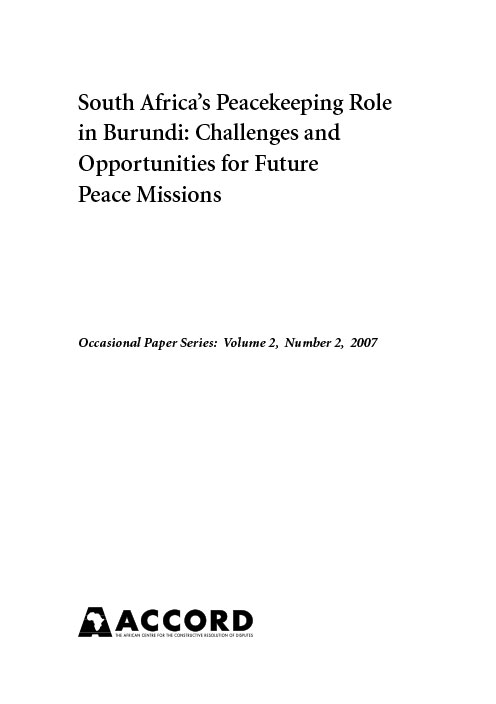
- The objective of this study is to provide an analysis of South Africa’s role in peacekeeping in Burundi and to identify the opportunities and challenges that confronted South Africa’s peacekeeping mission.
- The peaceful resolution of Africa’s conflicts is one of the cornerstones of South Africa’s foreign policy. It is intended to create a better South Africa, Africa, and world.
- The birth of a post-apartheid South Africa, through a peacefully negotiated agreement, coincided with a proliferation of intra-state conflicts in Africa.
- Some of these conflicts manifested themselves in protracted armed conflict driven by the need to control political power and characterised by assertion of identity as well as self-determination.
- Beneath the manifested identity and power struggles were deep-rooted causes to these conflicts that can be traced to colonial engineering of identity in African societies for the purposes of control over indigenous populations.
- South Africa’s commitment to resolving Africa’s conflicts, coupled with her reputation for the peaceful settlement of an intractable conflict, as well as her relative economic might, made it imperative that she would be drawn into peacemaking and peacekeeping sooner rather than later.
- Under the auspices of the Department of Foreign Affairs (DFA), a White Paper on Peace Missions was developed to guide any future role South Africa may have in peace missions.
- South Africa was formally drawn into the Burundi peace process in 1999 when former President Nelson Mandela was appointed Facilitator of the Arusha Peace Process and a peace agreement was signed by the parties in August 2000.
- The Department of Defence (DoD) in its own planning set 2007 as the year for its first deployment. However, the overwhelming need to secure the peace in Burundi necessitated the deployment of the South African Protection Service Detachment (SAPSD) in October 2001, almost six years earlier than planned.
- This early deployment resulted in several operational, budgetary, and personnel challenges which the paper analyses.
- The paper also highlights several instances related to consultation and communication where the guidelines established in the White Paper on Peace Missions were either circumvented or overridden due to the need to act with speed to respond to a volatile conflict and a tenuous peace that had to be arrested with minimum time delays.
- The authors have extensive experience in conflict intervention and are therefore sympathetic to the manner in which the deployment of the SAPSD was done and the need for expediency in such situations.
- The authors are also mindful of the gravity of deploying a country’s national defence force on foreign territory and consequently the acute need for widespread consultation and communication among and between all the relevant stakeholders within the framework of the national constitution and corresponding policies.
- The paper therefore concludes with a recommendation for a continuation and conclusion of the review of the White Paper on Peace Missions to make it more relevant to contemporary conflict situations and to address weaknesses identified from several years of experience gained by South Africa in peace missions throughout Africa.
